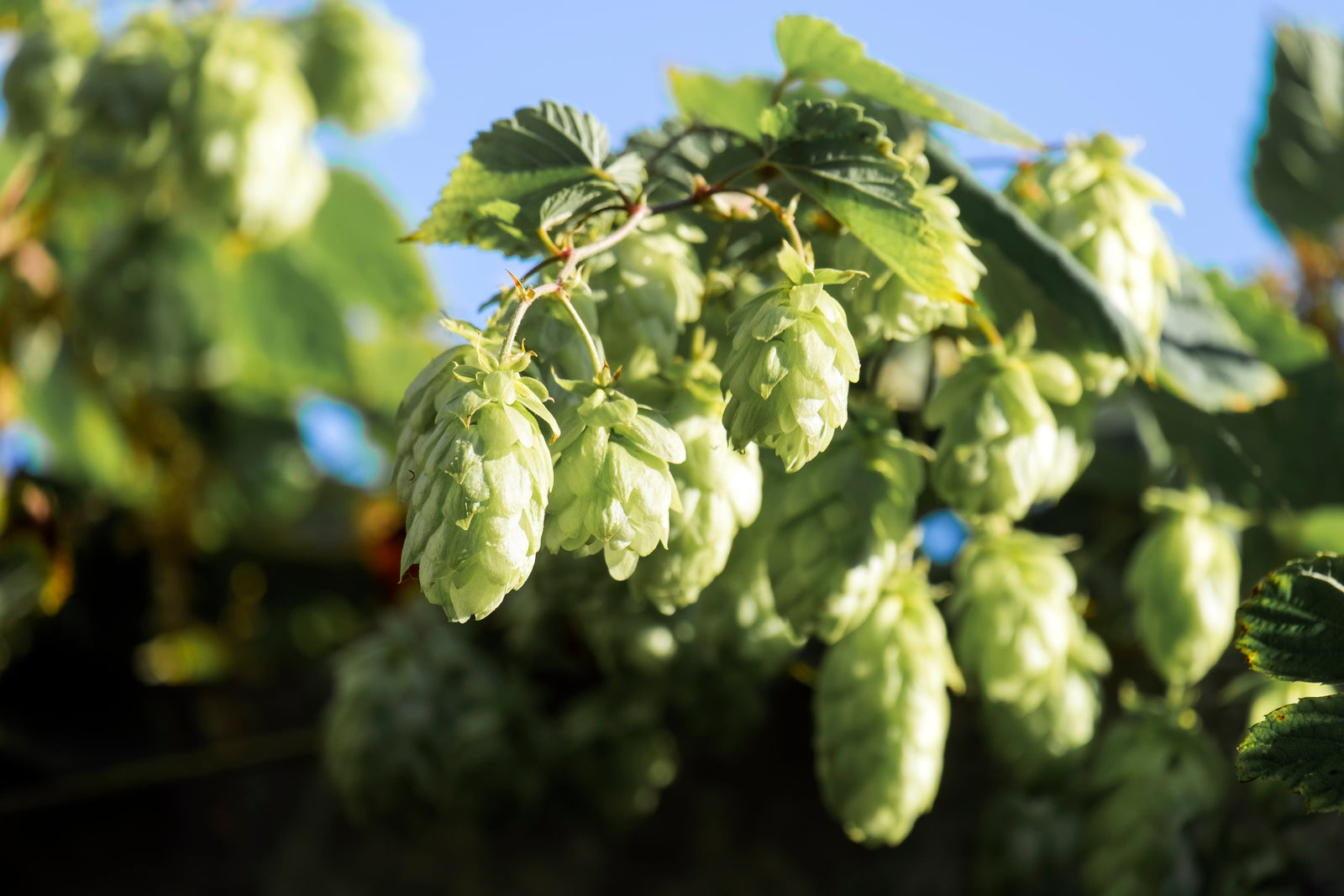Your Cart is Empty
Save on your first purchase for a limited time
Save on your first purchase for a limited time
Are you 18+?
Shop access is limited to adults age 18 and older.
What Are the Benefits of the Humulene Terpene?
July 21, 2024 3 min read

What Is the Humulene Terpene?
The botanical terpene humulene, pronounced hyoo-muh-leen, is a natural compound found in cannabis and hemp, as well as other plants such as hops, sunflowers, tobacco, orange, pine, cinnamon and clove. It’s not the most common cannabis terpene, but humulene has piqued the interest of researchers thanks to some of the unique effects it has shown in isolation and when combined with common cannabinoids like cannabidiol (CBD).
For example, a 2021 paper published in the journal Pharmacol Review found that “humulene may contribute to many pharmacological properties of cannabis, including anti-inflammatory and antinociceptive effects.”
But let’s take a step back. You might be wondering, “what are terpenes exactly, and what does ‘antinociceptive’ mean?”
Terpenes are compounds commonly found in a variety of botanical essential oils that interact with receptors throughout your body that can influence your nervous, digestive and endocannabinoid systems, amongst others. Terpenes are similar to cannabinoids in this way, but they have distinct aromatic qualities as well.
While humulene is chemically similar to one of the most common cannabis terpenes, β-caryophyllene, it has its own distinct effects and scent profile of funky, grassy notes. Think of the sharp, floral, slightly bitter flavor of IPA beers—you have humulene to thank for some of that signature sensory profile. But humulene has a lot more to offer than a distinctive pungency.
What Effects Are Associated With the Humulene Terpene?
In laboratory research, humulene has demonstrated anti-inflammatory and pain-relieving properties in mammals. Of note, research on mice showed that humulene reduced swelling and inflammation from histamine reactions and allergic asthma. Similar recent studies have shown that humulene also lowers cytokine levels and pro-inflammatory protein expression.
Humulene is also of interest to researchers as a potential pain-reliever. To understand the research into how humulene might reduce pain, it’s helpful to understand some key terms:
- Anaesthetic refers to substances that reduce pain, but may result in a loss of sensation or consciousness in the process. Anesthesia can refer to whole-body general anesthesia, like what doctors use for major surgery, as well as local anesthetics, like when a dentist uses a numbing agent before filling a cavity.
- Analgesic refers to any substance that reduces pain without inducing unconsciousness. There are a wide range of analgesic products on the market, from over-the-counter (OTC) aspirin, acetaminophen and nonsteroidal anti-inflammatory drugs (NSAIDs) to prescription opioids.
- Antinociceptive refers to a specific type of pain reliever that functions by blocking the nervous system from detecting painful stimuli. Antinociceptives can range from the OTC lidocaine used to take the sting off scraped knees or a sore throat spray, to powerful morphine and fentanyl, which block pain receptors in the nervous system.
As referenced earlier, humulene has specifically shown both analgesic and antinociceptive effects in pharmacology studies. That means humulene is believed to interact at the receptor level with the endocannabinoid and nervous systems to reduce both pain signals and inflammatory response.
What are the Benefits of the Humulene Terpene?
The role of humulene as it contributes to “the cannabis entourage effect” is an important one. The entourage effect is a term that describes how cannabinoids and terpenes work together to create unique compound effects that are different from those produced by any terpene or cannabinoid acting in isolation.
It is worth noting that much cannabis research is still in preliminary stages. As the authors of 2024 research review were quick to spotlight: “Most available data come[s] from preclinical studies conducted using animal models or in vitro experiments.”
That said, the initial research in the therapeutic potential of terpenes is promising. For example, a 2007 study found that opioids that naturally occur within and are produced by the human body activate the nervous system in similar ways to plant cannabinoids, creating an antinociceptive effect. Essentially, that suggests that humulene can work together with cannabinoids like THC, CBD, CBN and CBG to enhance each compound’s natural ability to lessen pain signals the nervous system sends to the brain.
Full-spectrum CBD topicals that also contain humulene terpenes may offer greater anti-inflammatory and analgesic effects than topical products without this terpene profile—and also won’t yield the intoxicating effects of high-THC products or prescription opioids, and without the numbing sensation of menthol or camphor. Next time you’re shopping for a CBD salve, cream or lotion, look for one with terpenes focused on addressing pain and inflammation, such as humulene.

Scientifically reviewed by
Dr. Riley Kirk

Scientifically reviewed by
Dr. John Heineman








